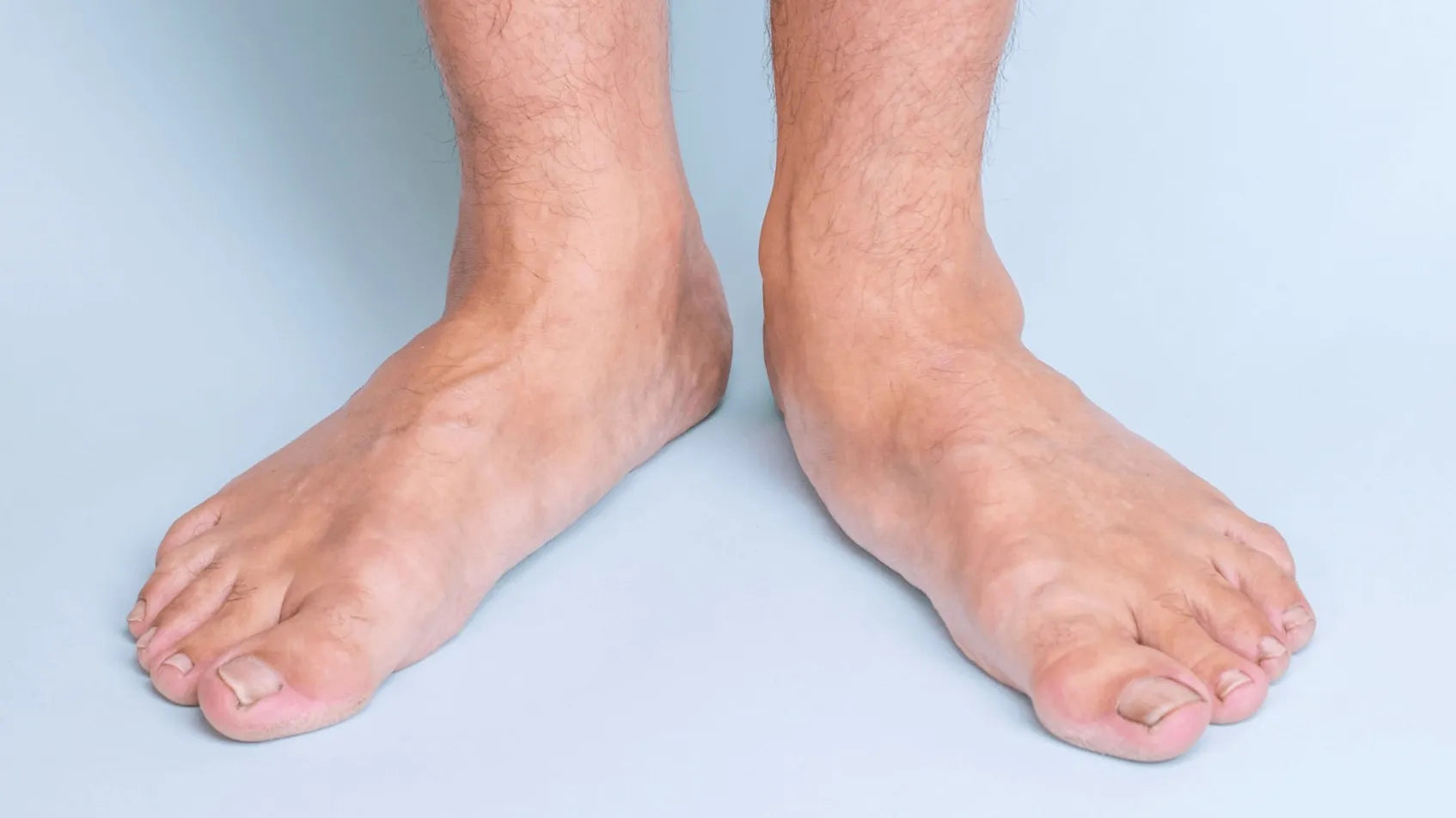Outer (Lateral) Thigh
The “Perfect Outer Thigh”
Female
- Smooth, firm skin without skin imperfections
- No hair in women
- Typical fat distribution in women with well-formed thighs with typical fat deposits in the hip area
Male
- Smooth, firm skin without skin imperfections
- Little or no hair in men,
- Thin layer of fat in men
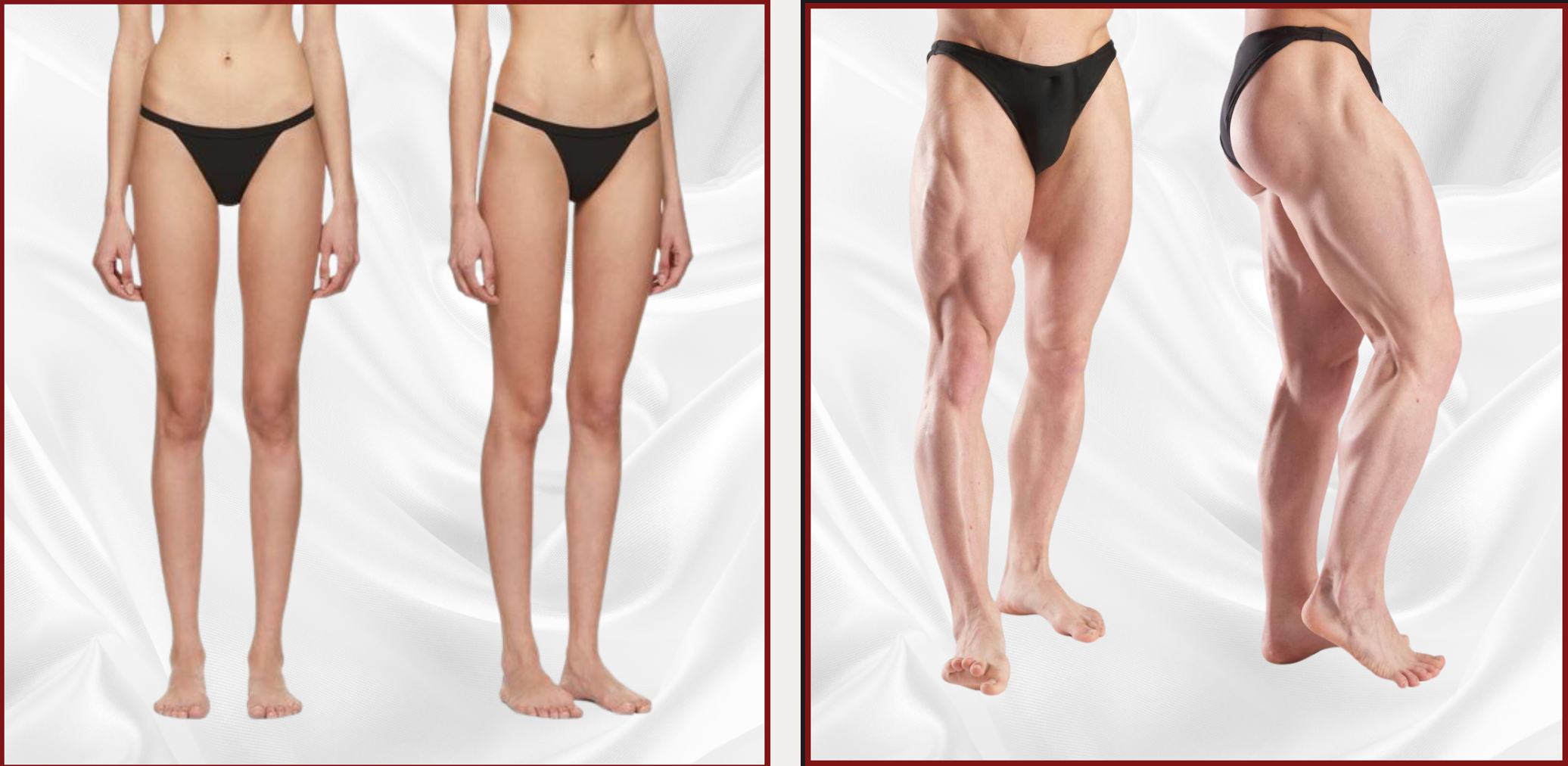
Too thick outer thighs (“saddlebag deformity”)
The tendency to accumulate fat in the outer thigh area can be hereditary. “Saddle-bags” are accumulations of fat on the outer thighs that exceed the level of gender fat distribution. This fat depot on the outer thighs gives the appearance of a large buttocks. Like the bottom area, the outer thigh area is one of those areas that are particularly resistant to any type of diet or physical activity. Many patients are discouraged when they see virtually no change in this area after starving off unwanted pounds. Although the rest of the thigh area is often very muscular and well-formed, this love handle is particularly evident when wearing tight clothing and tight pants. Many women therefore prefer to wear wide trousers or skirts. The women affected suffer from this deviation and often have low self-esteem. With liposuction in the area of the outer thighs, fat can be permanently sucked out of the fat layer directly under the skin. When the skin is sufficiently elastic, the overlying skin shrinks and the shape changes, which restores a defined appearance and thus improves the thigh profile as a whole. The result of the treatment leads to a significant narrowing and beautification of the leg silhouette. And thus to an optical leg lengthening. A well-formed and firm outer thigh gives a younger appearance. Well-formed thighs can have a very positive effect on a person’s self-confidence. After liposuction, patients who used to feel ashamed and hid their figure under their clothes feel noticeably better again and dare to show themselves in public with tight-fitting clothes or in a bikini. Of course, the clothes also fit better again.
Too thin outer thighs
Firm, well-formed and firm thighs in women are a sign of an active and healthy life for many people. In the absence of typically female fat deposits in the hip and outer thigh area, the silhouette appears girlish or even masculine. An easy way to enlarge the female thighs that are too thin is to inject your own fat into the area of the outer thighs.
Unequal thighs
Whether we find the thighs attractive or not depends on their proportions (basic harmony) but also on their small asymmetries. However, the mathematically exact thigh proportions only represent a certain basic harmony. The rule of thumb is that the length ratio of thighs to lower legs is 1.63. A more detailed analysis of the two thighs shows that the right and left thigh are not completely symmetrical. Small differences between the two lower legs make the legs appear much more expressive and interesting. Larger differences, on the other hand, disturb the basic harmony and make the legs appear less attractive. There are several treatment options for the correction of the different large/thick thighs, which are used depending on the extent of the asymmetry and the wishes of the patient. Autologous fat injection/lipofilling to correct congenital and acquired thigh asymmetries is the therapy of choice today. In addition, liposuction/liposuction can be performed on the larger/thicker side to adjust the thigh area
Body shape restoration after massive weight loss
After massive weight loss, there is a significant excess of inelastic skin in the bottom and leg area. Excess skin in the area of the outside of the thigh shows up in the form of a sagging thigh with sagging skin. Many patients feel severely limited as a result and even perceive this as an impairment of their quality of life, they no longer want to wear shorts or tight-fitting trousers for a long time. Empty and/or sagging thighs often disturb a positive body feeling”. Only tightening the outside of the thigh can produce a reliable result. The tightening of the outer thighs can be carried out as a single operation or as part of a restoration of the body shape in the lower body area (lower body lift).
Lipedema
In the area of the lower extremities, lipoedema leads to significant disproportionate thickening of the buttocks, thighs and) or lower legs, with the exception of the feet. Decompression through liposuction in the case of lipedema in the buttocks area, decompression through liposuction in the case of lipedema in the thigh area and decompression through liposuction in the case of lipedema in the lower leg area (usually in several operations) have proven effective for efficient and sustained pressure relief (decompression) and, above all, to reduce symptoms. Since a lifelong increase in fatty tissue is to be expected in lipoedema, an operation should be sought at an early stage as soon as the first typical symptoms appear. In many patients, liposuction relieves the symptoms, often over a period of years, or they disappear completely. In any case, an increase in the quality of life, a reduction in the compression class of the compression clothing and a reduction in the frequency of manual lymphatic drainage can be expected. In addition, an operation as early as possible can prevent the development of dangerous secondary diseases.
Age changes in the outer thigh
Tissue aging causes characteristic age changes in the thigh area: age-related loss of volume and/or tension in the thigh muscles (especially the calf muscles), increase in thigh fatty tissue, coupled with a loss of elasticity in the skin, and changes in volume and shape the bones allow the soft tissue to become larger than the contents. In women, the so-called cellulite (orange peel skin) occurs in the skin area.
Female
- Increasing axis deviations in the knee joint area (esp. knock knees, valgus legs)
- Wrinkled, sagging skin with skin imperfections (e.g. cellulite) in the thigh are
- Increasing fat deposits in the area of the buttocks and the hips and outer thighs, as well as increase in volume of the inner thighs with loss of the thigh gap
- Loss of volume and tension in the thigh muscles
Male
- Increasing axis deviations in the knee joint area (especially bowlegs, varus legs)
- Wrinkled, sagging skin with skin imperfections in the thigh area
- Increasing thickness of the fat layer in the thigh area with loss of relief of the tractus iliotibialis on the outside of the thigh and significant loss of volume and tension in the thigh muscles
- Loss of volume and tension in the thigh muscles
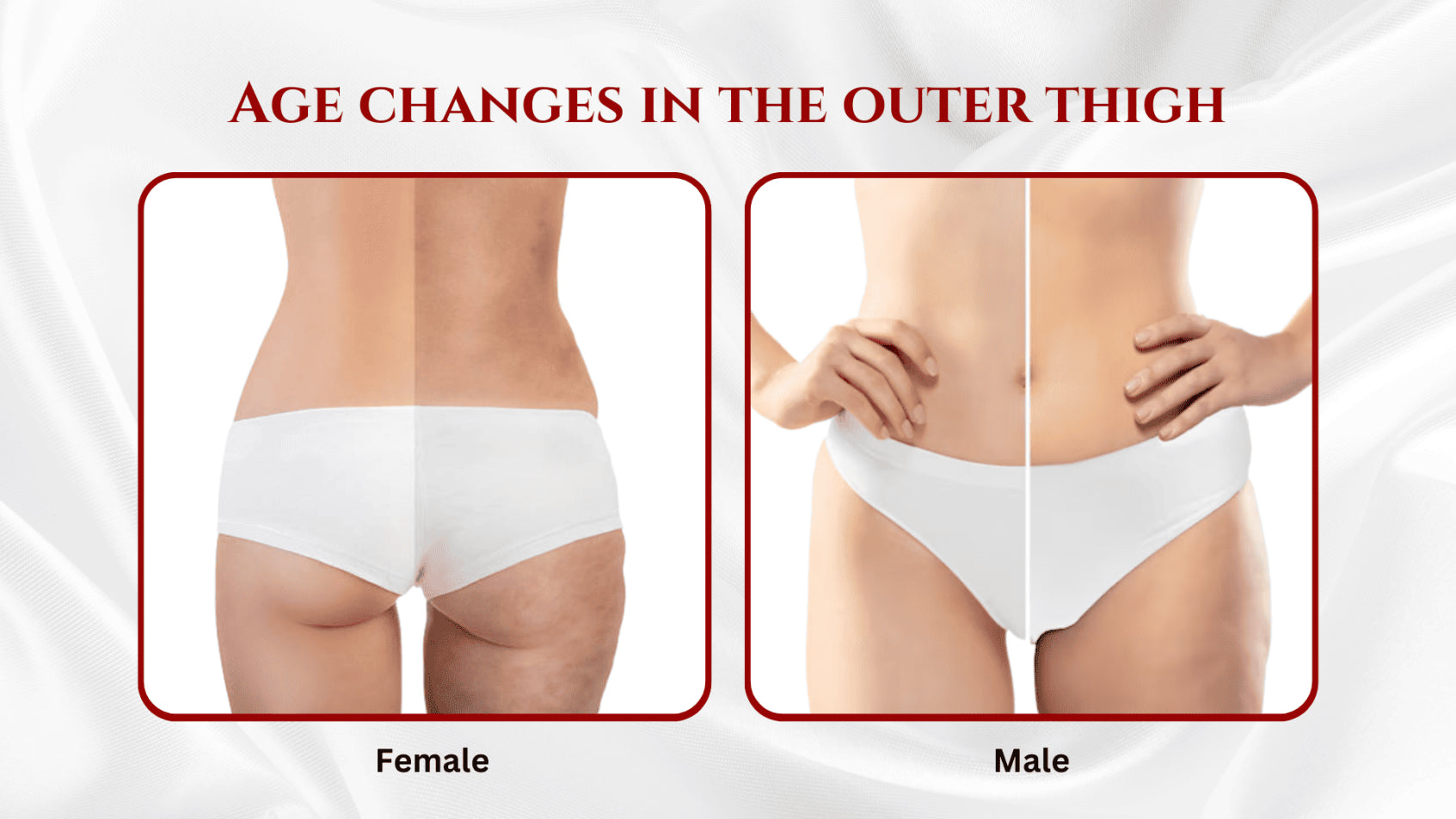
Cellulite (orange peel skin)
In women, the so-called cellulite (orange peel skin) occurs in the skin area. Cellulite is a condition-related, non-inflammatory change in the subcutaneous fatty tissue in the thigh and buttocks area. Cellulite occurs almost exclusively in women (influence of the sex hormone estrogen). If you are overweight or have weak connective tissue, the skin condition can appear at a young age. With advancing age, 80 to 90% of women develop cellulite to varying degrees.
Sagging outer (lateral) thighs
Empty and/or sagging thighs often disturb a positive body feeling”. The choice of corrective procedure depends on the extent and localization of the sagging skin (ptosis), the quality of the soft skin layer and the wishes of the patient. The autologous fat injection/lipofilling to correct an incipient loss of volume in the thigh area is the therapy of choice. In the case of advanced ptosis, only tightening the outside of the thigh can produce a reliable result. The tightening of the outer thighs can be carried out as a single operation or as part of a restoration of the body shape in the lower body area (lower body lift)
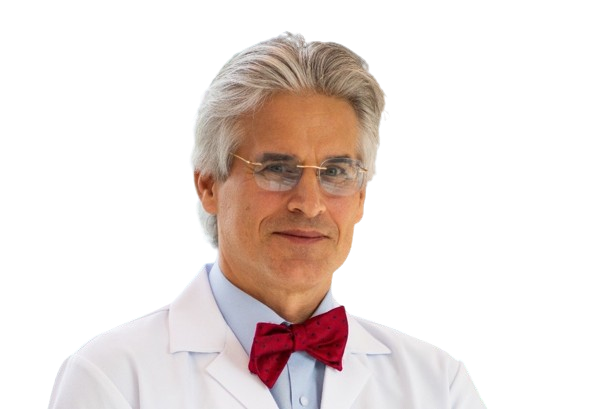
Ask the Expert: Thighs, Knees & Legs Surgery Treatments.
Discover the secrets to radiant, youthful skin with personalized guidance from our face and neck treatment expert. Ask the expert today and let us help you look and feel your best!
The Inner (Medial) Thigh
The “Perfect Inner Thigh”
Female
- Smooth, firm skin without skin imperfections
- No hair in women
- Typical fat distribution in women with well-formed thighs with a typical “thigh gap” (continuous space between the inner thighs that occurs when the knees touch when standing upright) on the inner thighs
- Slightly defined thigh muscles in women
Male
- Smooth, firm skin without skin imperfections
- Little or no hair in men,
- Thin layer of fat in men
Too thick inner thighs
The tendency to accumulate fat in the inner thigh area can be hereditary. In addition to the aesthetic impairment (thick thighs), a strong accumulation of fat leads to a functional impairment due to rubbing of the legs. The inner thigh area, like the buttocks area, is one of those areas that are particularly resistant to any diet or physical activity. Many patients are discouraged when they see virtually no change in this area after starving off unwanted pounds. Although the rest of the thigh area is often very muscular and well-formed, these love handles are particularly evident when wearing tight clothing and tight pants. Many women therefore prefer to wear wide trousers or skirts. The women affected suffer from this deviation and often have low self-esteem. With liposuction in the inner thigh area, fat can be permanently removed from the fat layer directly under the skin. When the skin is sufficiently elastic, the overlying skin shrinks and the shape changes, which restores a defined appearance and thus improves the thigh profile as a whole. The result of the treatment leads to a significant narrowing and beautification of the leg silhouette and thus to an optical leg lengthening. A well-formed and firm inner thigh gives a younger appearance. The so-called “thigh gap” is currently a beauty ideal. Shapely thighs can have a very positive effect on a person’s self-confidence. After liposuction, patients who used to feel ashamed and hid their figure under their clothes feel noticeably better again and dare to show themselves in public with tight-fitting clothes or in a bikini. Of course, the clothes also fit better again.
Too thin inner thighs
A clearly defined muscle relief in the upper and lower leg area in men is part of the so-called “perfect bottom and leg shape”. Muscle build-up can be disrupted by congenital malformations or early childhood diseases (polio). The thighs look storky. A simple way to increase the inside of the thigh that is too thin is an autologous fat injection in the area of the inside of the thigh.
Unequal thighs
Whether we find the thighs attractive or not depends on their proportions (basic harmony) but also on their small asymmetries. However, the mathematically exact thigh proportions only represent a certain basic harmony. The rule of thumb is that the length ratio of thighs to lower legs is 1.63. A more detailed analysis of the two thighs shows that the right and left thigh are not completely symmetrical. Small differences between the two lower legs make the legs appear much more expressive and interesting. Larger differences, on the other hand, disturb the basic harmony and make the legs appear less attractive. There are several treatment options for the correction of the different large/thick thighs, which are used depending on the extent of the asymmetry and the wishes of the patient. Autologous fat injection/lipofilling to correct congenital and acquired thigh asymmetries is the therapy of choice today. In addition, liposuction/liposuction can be performed on the larger/thicker side to adjust the thigh area.
Body shape restoration after massive weight loss
After massive weight loss, there is a significant excess of inelastic skin in the bottom and leg area. Excess skin in the area of the inner thighs shows up in the form of a sagging thigh with sagging skin. Many patients feel severely restricted as a result and even perceive this as an impairment of their quality of life, they no longer want to wear shorts or tight-fitting long trousers. Empty and/or sagging thighs often disturb a positive body feeling”. Only the tightening of the inner thighs can produce a reliable result. The tightening of the inside of the thigh can be carried out as a single operation or in combination with a tightening of the inside of the knee.
Lipedema
In the area of the lower extremities, lipoedema leads to significant disproportionate thickening of the buttocks, thighs and) or lower legs, with the exception of the feet. Decompression through liposuction in the case of lipedema in the buttocks area, decompression through liposuction in the case of lipedema in the thigh area and decompression through liposuction in the case of lipedema in the lower leg area (usually in several operations) have proven effective for efficient and sustained pressure relief (decompression) and, above all, to reduce symptoms. Since a lifelong increase in fatty tissue is to be expected in lipoedema, an operation should be sought at an early stage as soon as the first typical symptoms appear. In many patients, liposuction relieves the symptoms, often over a period of years, or they disappear completely. In any case, an increase in the quality of life, a reduction in the compression class of the compression clothing and a reduction in the frequency of manual lymphatic drainage can be expected. In addition, an operation as early as possible can prevent the development of dangerous secondary diseases
Age changes in the thigh
Tissue aging causes characteristic age changes in the thigh area: age-related loss of volume and/or tension in the thigh muscles (especially the calf muscles), increase in thigh fatty tissue, coupled with a loss of elasticity in the skin, and changes in volume and shape the bones allow the soft tissue to become larger than the contents.

Sagging inner thighs
Empty and/or sagging thighs often disturb a positive body feeling”. The choice of corrective procedure depends on the extent and localization of the sagging skin (ptosis), the quality of the soft skin layer and the wishes of the patient. At the onset of ptosis, a so-called minilifting in the area of the inside of the thigh can produce sufficient tightening without a visible scar in the thigh area. In the case of advanced ptosis, only tightening the inside of the thigh can produce a reliable result. The tightening of the inside of the thigh can be carried out as a single operation or in combination with a tightening of the inside of the knee.
The Knee
The “Perfect Knee”
Female
- Smooth, firm skin without skin imperfections
- No hair in women
- Thin layer of fat in both women and men and clear contour lines of the bony thigh bones (femur), kneecap (patella) and lower leg bones (tibia). The indentations on each side of the kneecap are characteristic of a young knee.
- The ratio of knee circumference to lower leg circumference should be about 1 for women.
Male
- Smooth, firm skin without skin imperfections
- Little or no hair in men,
- Thin layer of fat in both women and men and clear contour lines of the bony thigh bones (femur), kneecap (patella) and lower leg bones (tibia). The indentations on each side of the kneecap are characteristic of a young knee.
- The ratio of knee circumference to lower leg circumference should be < 1 for men
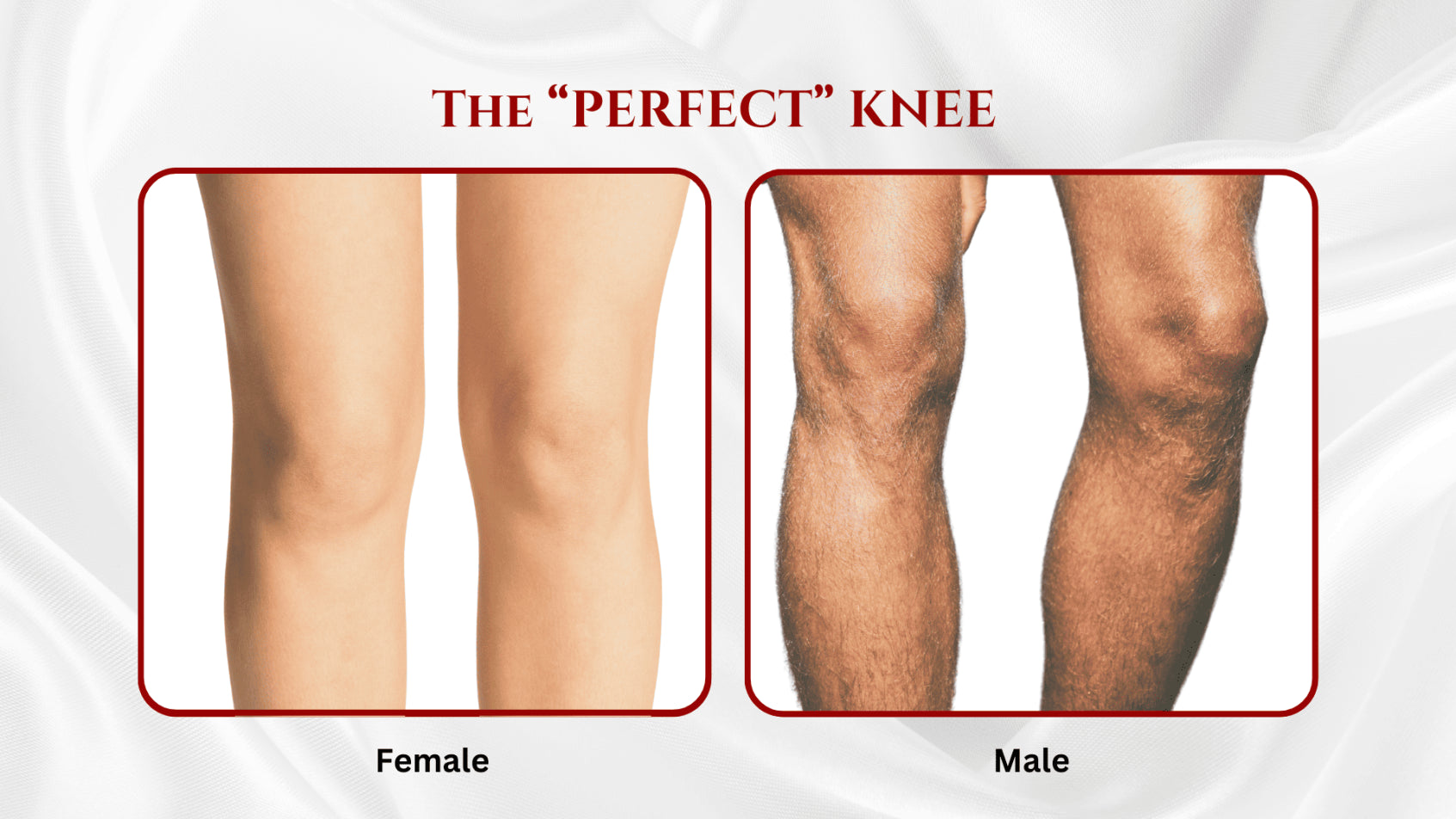
Too thick knees
The tendency to accumulate fat around the inside of the knee can be hereditary. In addition to the aesthetic impairment (thick thighs), a strong accumulation of fat leads to a functional impairment due to rubbing of the legs. In addition to the inside, there are often excess fat deposits above and below the kneecap. The inside of the knee, like the inside of the thigh, is one of those areas that are particularly resistant to any diet or physical activity. Many patients are discouraged when they see virtually no change in this area after starving off unwanted pounds. Although the rest of the thigh area is often very tight and well-formed, these love handles are particularly noticeable when wearing tight pants and short skirts. Many women therefore prefer to wear wide trousers or long skirts. The women affected suffer from their “fat knees” and often have low self-esteem. With liposuction in the knee area, fat can be permanently sucked out of the fat layer directly under the skin. When the skin is sufficiently elastic, the overlying skin shrinks and the shape changes, which restores a defined appearance and thus improves the thigh profile as a whole. The result of the treatment leads to a significant narrowing and beautification of the knee silhouette and thus to an optical leg lengthening. A well-formed and tight knee region gives a younger appearance. Shapely thighs and knees can have a very positive impact on a person’s self-confidence. After liposuction, patients who used to feel ashamed and hid their figure under clothes noticeably feel again.
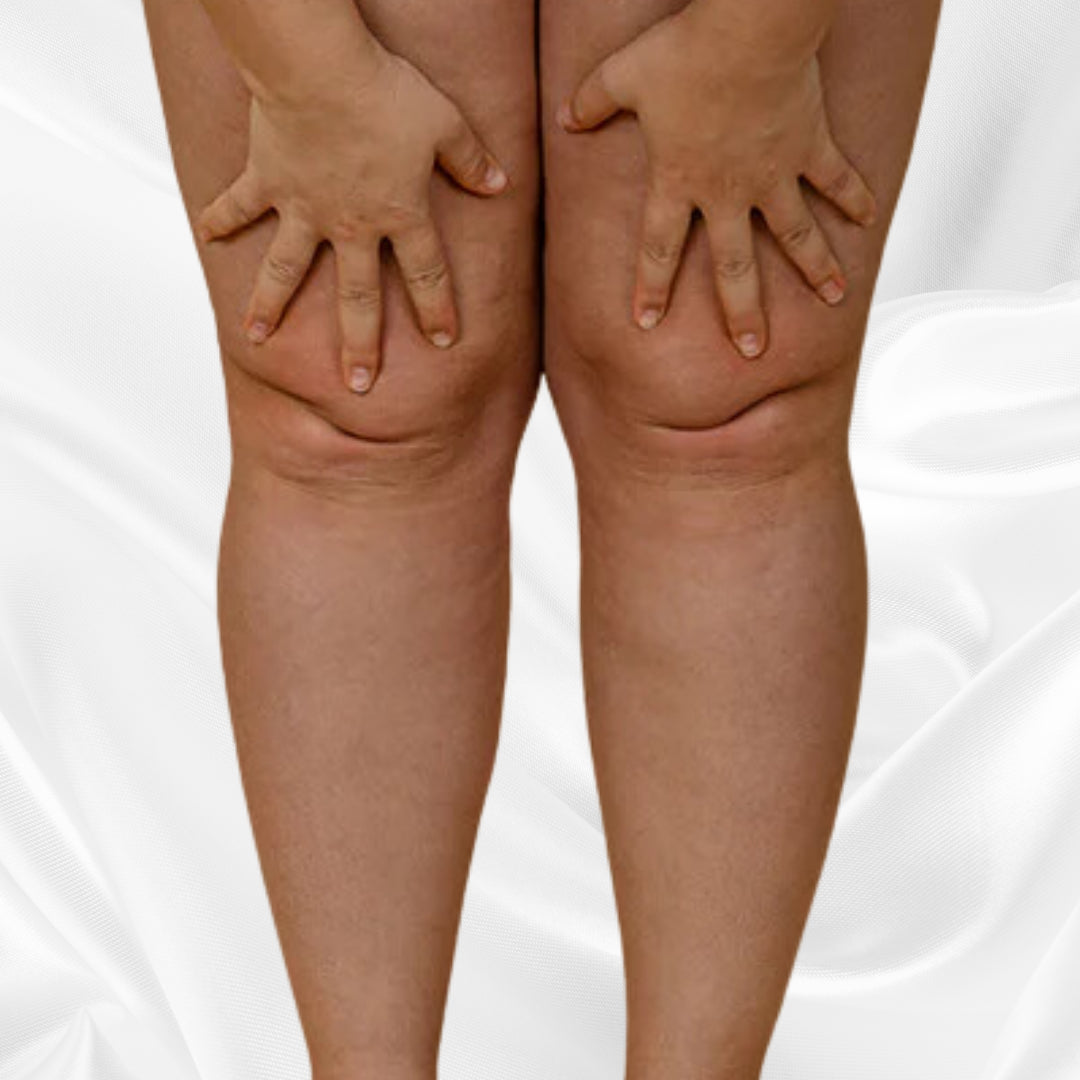
Too thin knee
A clearly defined muscle relief in the upper and lower leg area in men is part of the so-called “perfect bottom and leg shape”. Muscle build-up can be disrupted by congenital malformations or early childhood diseases (polio). The thighs look storky. A simple way to conceal muscle deficits is to inject your own fat into the knee area.
Unequal knees
Whether we find the knees attractive or not depends on their proportions (basic harmony) but also on their small asymmetries. However, the mathematically precisely calculated thigh proportions only represent a certain basic harmony. As a rule of thumb, the ratio of knee circumference to lower leg discomfort should be around 1 for women and <1 for men. Small differences between the two knees make the legs look much more expressive and interesting. Larger differences, on the other hand, disturb the basic harmony and make the legs appear less attractive. There are several treatment options for the correction of different large/thick knees, which are used depending on the extent of the asymmetry and the wishes of the patient. Autologous fat injection/lipofilling to correct congenital and acquired knee asymmetries is the therapy of choice today. In addition, an equalizing liposuction/liposuction in the knee area can be carried out on the larger/thicker side.
Body shape restoration after massive weight loss
After massive weight loss, there is a significant excess of inelastic skin in the bottom and leg area. Excess skin in the area of the inner thighs shows up in the form of a sagging thigh with sagging skin. Many patients feel severely restricted as a result and even perceive this as an impairment of their quality of life, they no longer want to wear shorts or tight-fitting long trousers. Empty and/or sagging thighs often disturb a positive body feeling”. Only tightening the inside of the thigh and the inside of the knee can produce a reliable result. The tightening of the inside of the thigh and the inside of the knee can be carried out as a single operation or in combination with a tightening of the inside of the knee.
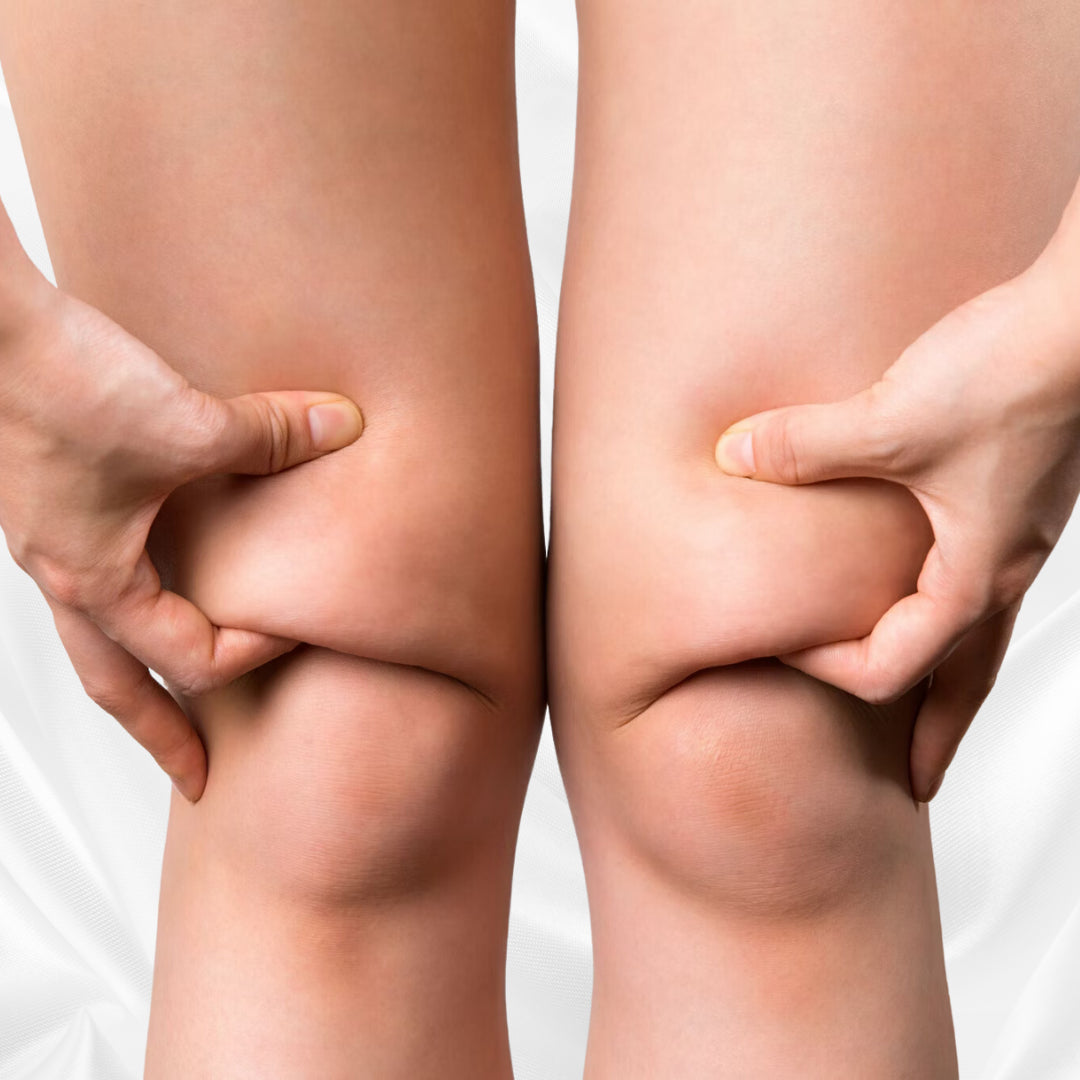
Lipedema
In the area of the lower extremities, lipoedema leads to significant disproportionate thickening of the buttocks, thighs and) or lower legs, with the exception of the feet. Decompression through liposuction in the case of lipedema in the buttocks area, decompression through liposuction in the case of lipedema in the thigh area and decompression through liposuction in the case of lipedema in the lower leg area (usually in several operations) have proven effective for efficient and sustained pressure relief (decompression) and, above all, to reduce symptoms. Since a lifelong increase in fatty tissue is to be expected in lipoedema, an operation should be sought at an early stage as soon as the first typical symptoms appear. In many patients, liposuction relieves the symptoms, often over a period of years, or they disappear completely. In any case, an increase in the quality of life, a reduction in the compression class of the compression clothing and a reduction in the frequency of manual lymphatic drainage can be expected. In addition, an operation as early as possible can prevent the development of dangerous secondary diseases.
Age changes in the knee
Tissue aging causes characteristic age changes in the thigh area: age-related loss of volume and/or tension in the thigh muscles (especially the calf muscles), increase in thigh fatty tissue, coupled with a loss of elasticity in the skin, and changes in volume and shape the bones allow the soft tissue to become larger than the contents.
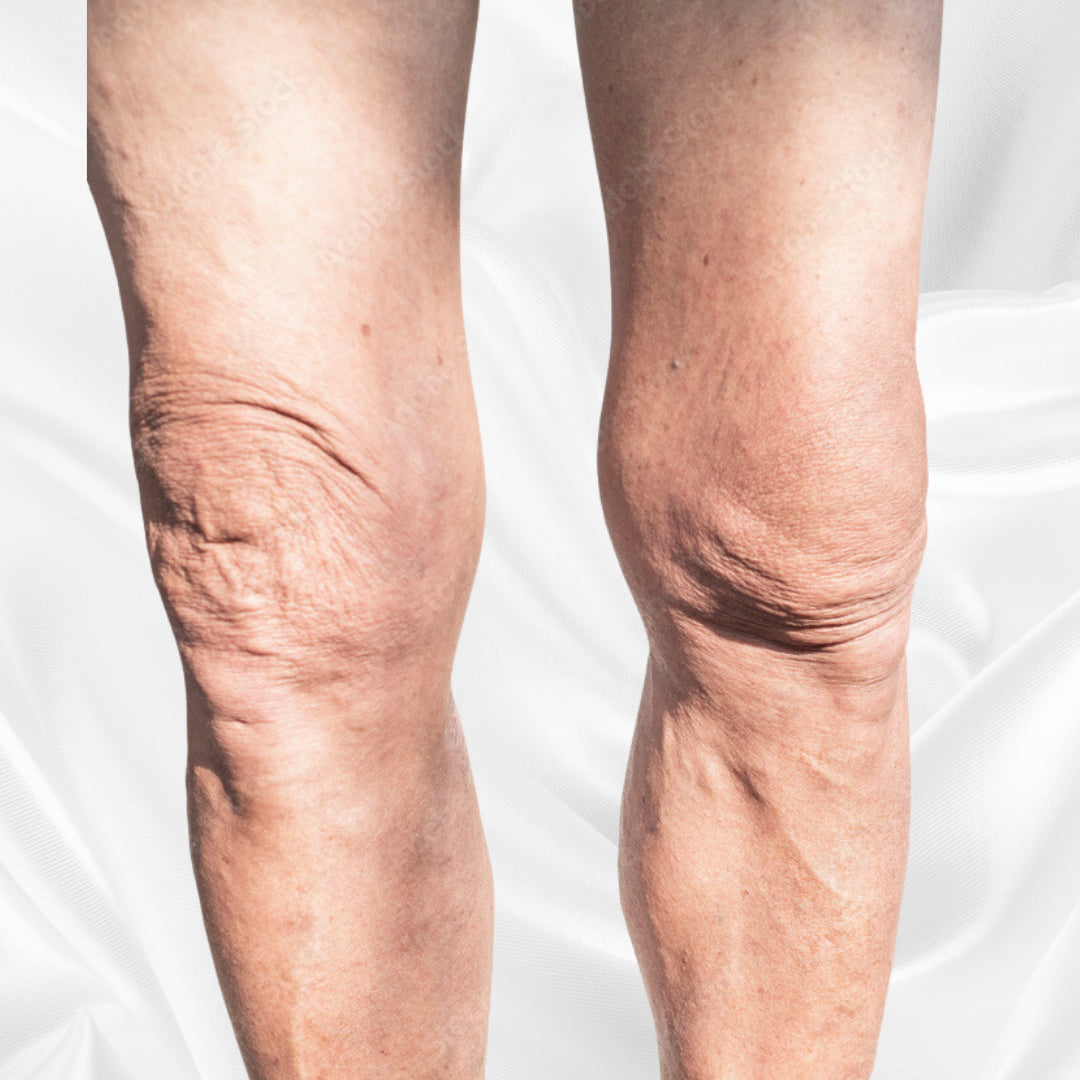
Sagging knee
The skin hangs mainly on the inside in the knee area. The knee region loses its clean lines. Empty and/or hanging skin sacs (and thick, swollen knees due to arthrosis) often disturb a positive body feeling”. Hanging skin bags can only be reliably removed by tightening the inside of the knee. The tightening of the inside of the knee can be carried out as a single operation or in combination with a tightening of the inside of the thigh.
The Lower Leg
The “Perfect Lower Leg”
Female
- Smooth, firm skin without skin imperfections
- No hair in women
- Thin layer of fat
Male
- Smooth, firm skin without skin imperfections
- No hair in women
- Thin layer of fat
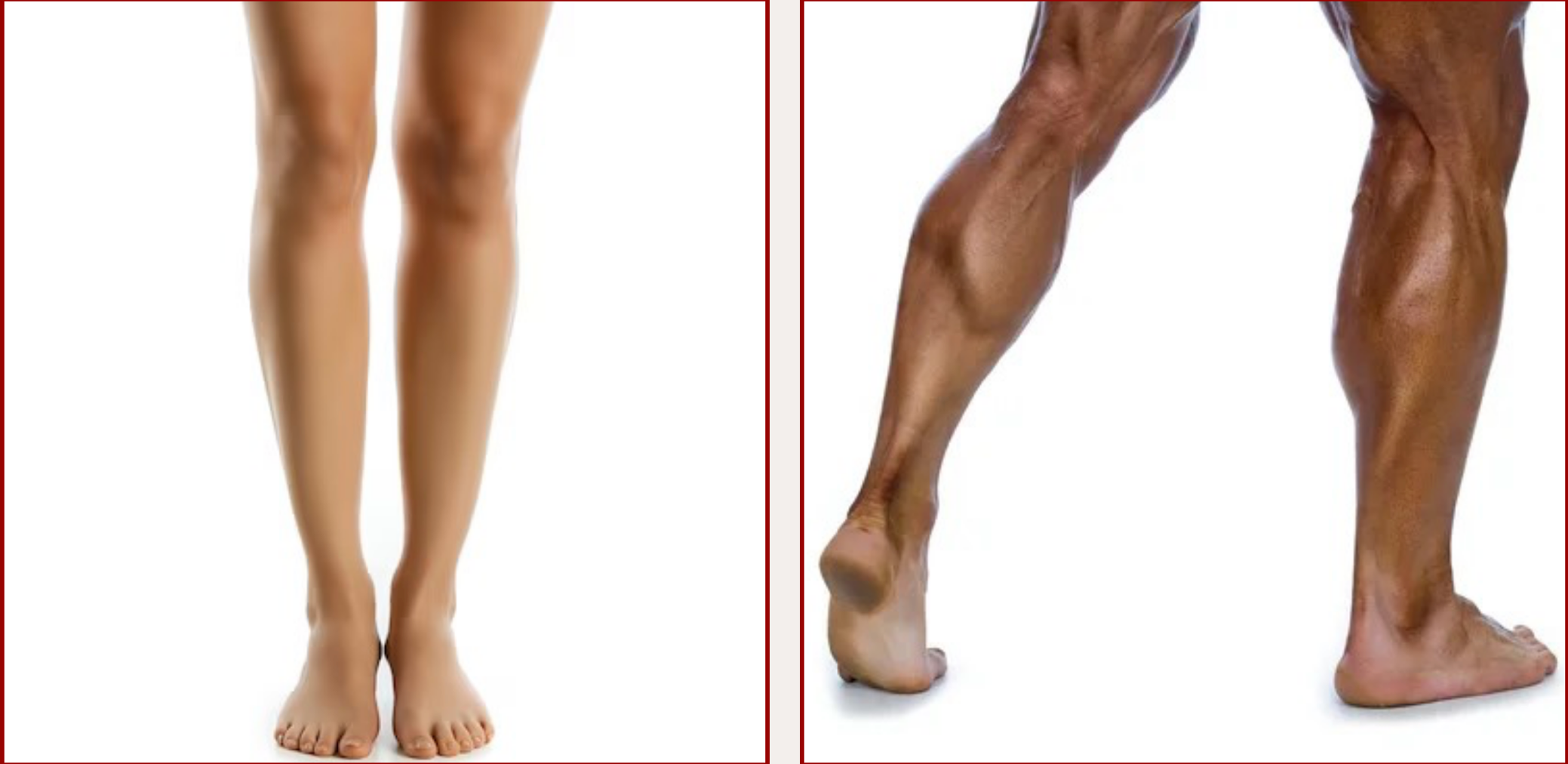
Too thick Lower Legs
Large lower legs can be congenital or acquired. The tendency to accumulate fat in the lower leg area can be hereditary. Many women suffer from oversized calves and are unhappy with the silhouette of their lower legs. Many patients are discouraged when they see virtually no change in this area after starving off unwanted pounds. The lower leg area, like the inner thighs, is one of those areas that are particularly resistant to any diet or physical activity. In addition to the backs, there are excess fat deposits on the inside and outsidew and front except for the shinbone area. In the case of extremely strong lower legs or calves, it is not uncommon for so-called lipoedema to occur, which spreads to the hips. The warmer season then quickly becomes a burden and one feels uncomfortable wearing shorter skirts. But even in the cooler months, unwelcome fat deposits in the calf area can cause problems – especially if it makes it impossible to wear boots. The women affected suffer from their “fat calves” and often have low self-esteem. With liposuction in the lower leg area, fat can be permanently sucked out of the fat layer directly under the skin. When the skin is sufficiently elastic, the overlying skin shrinks and the shape changes, which restores a defined appearance and thus improves the overall profile of the lower leg. The result of the treatment leads to a significant narrowing and beautification of the silhouette of the lower leg and thus to an optical leg lengthening. Well-formed and firm lower legs give a younger appearance. Shapely thighs and knees can have a very positive impact on a person’s self-confidence. After liposuction, patients who used to feel ashamed and hid their lower legs under clothing feel noticeably better again and dare to show themselves in public with tight-fitting clothing, short skirts and high boots.
Too thin Lower Legs
Tight, well-formed and toned calves are a sign of an active and healthy life for many people. But despite sport, the muscles responsible for the calf in particular are often difficult to train. A simple way to enlarge calves that are too thin is a calf augmentation with autologous fat injection or a calf augmentation with implant.
Unequal lower legs
Whether we find the lower legs attractive or not depends on their proportions (basic harmony) but also on their small asymmetries. However, the mathematically precisely calculated lower leg proportions only represent a certain basic harmony. As a rule of thumb, the length ratio of thighs to lower legs is 1.63. A more detailed analysis of the two lower legs shows that the right and left lower leg are not completely symmetrical. Small differences between the two lower legs make the legs appear much more expressive and interesting. Larger differences, on the other hand, disturb the basic harmony and make the legs appear less attractive. There are several treatment options for the correction of the different large/thick lower legs, which are used depending on the extent of the asymmetry and the wishes of the patient. Autologous fat injection/lipofilling to correct congenital and acquired lower leg asymmetries is the therapy of choice today. Alternatively, calf augmentation with an implant on the smaller side and/or liposuction/liposuction to adjust the lower leg area on the larger one page to be carried out.
Body shape restoration after massive weight loss
After massive weight loss, there is a significant excess of inelastic skin in the bottom and leg area. Excess skin in the area of the inner thighs shows up in the form of a sagging thigh with sagging skin. Many patients feel severely restricted as a result and even perceive this as an impairment of their quality of life, they no longer want to wear shorts or tight-fitting long trousers. Empty and/or sagging thighs often disturb a positive body feeling”. Only tightening the inside of the thigh and the inside of the knee can produce a reliable result. The tightening of the inside of the thigh and the inside of the knee can be carried out as a single operation or in combination with a tightening of the inside of the knee.
Lipedema
In the area of the lower extremities, lipoedema leads to significant disproportionate thickening of the buttocks, thighs and) or lower legs, with the exception of the feet. Decompression through liposuction in the case of lipedema in the buttocks area, decompression through liposuction in the case of lipedema in the thigh area and decompression through liposuction in the case of lipedema in the lower leg area (usually in several operations) have proven effective for efficient and sustained pressure relief (decompression) and, above all, to reduce symptoms. Since a lifelong increase in fatty tissue is to be expected in lipoedema, an operation should be sought at an early stage as soon as the first typical symptoms appear. In many patients, liposuction relieves the symptoms, often over a period of years, or they disappear completely. In any case, an increase in the quality of life, a reduction in the compression class of the compression clothing and a reduction in the frequency of manual lymphatic drainage can be expected. In addition, an operation as early as possible can prevent the development of dangerous secondary diseases.
Age changes in the Lower Leg
Tissue aging causes characteristic age changes in the lower leg area: age-related loss of volume and/or tension in the thigh muscles, increase in knee fatty tissue, coupled with a loss of elasticity in the skin, and changes in volume and shape of the bones (arthrosis in the knee). /gonarthrosis) allow the soft tissue to become larger than the contents.
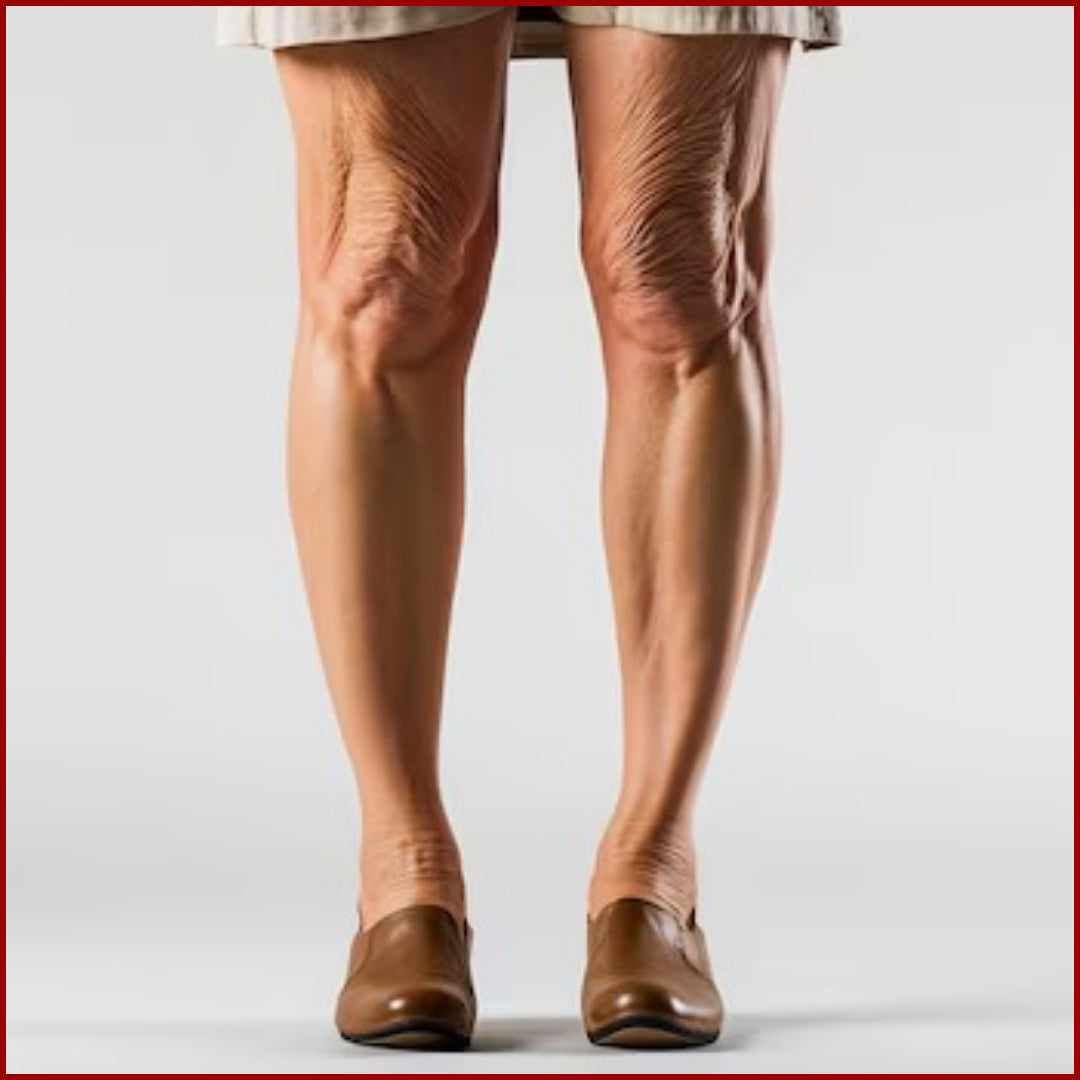
Sagging Lower Leg
Empty and/or sagging lower legs often disturb a positive body feeling”. The choice of corrective procedure depends on the extent and localization of the sagging skin (ptosis), the quality of the soft skin layer and the wishes of the patient. The autologous fat injection/lipofilling to correct an incipient loss of volume in the lower leg area is the therapy of choice. Alternatively, the missing buttock volume can be achieved by calf augmentation with implants. In the case of advanced ptosis, reshaping of the lower leg with a lower leg lift is required. In old age, varicose veins often form (varicose veins) with the formation of increased tissue fluid retention (leg edema) and “fat” legs. The treatment of vein problems for functional and aesthetic reasons is the focus here.
The Ankle & Foot
The “Perfect Foot”
The “Perfect Foot” can be described as follows
- Skin: Smooth, youthful skin can help make the foot look more attractive. The biggest challenge in the foot is keeping the skin from drying out and avoid hyperkeratosis (calluses)
- Vein: The next big complaint among those who deem their feet as ugly are varicose veins. Having noticeable large veins on top of the foot is considered normal and healthy. The veins of complaint are the tiny, “spider” veins
- Nail: clear well maintained nails, even with color (women)can make a foot look attractive
Foot “curves”: The foot having good anatomical structure can also lead to a “pretty” vs. “ugly” foot. Thin bonds, slim instep with a thin layer of fat, and straight toes are a signs of youth. Prominent bones (likes bunions) or hammertoes can be unpleasant.
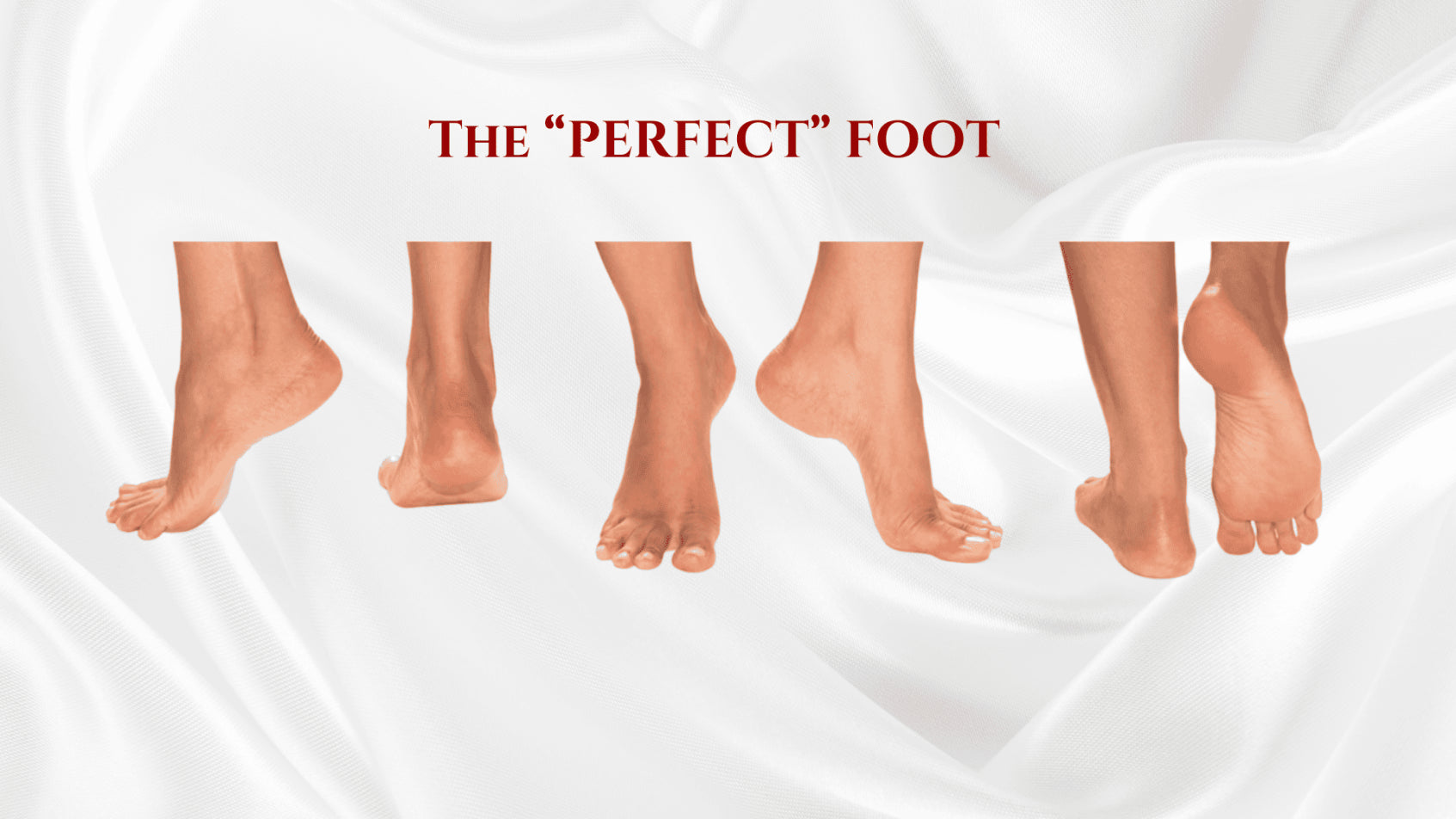
Edema
Swelling in the ankles, feet and legs is often caused by a build-up of fluid in these areas, called oedema. Oedema is usually caused by: standing or sitting in the same position for too long. eating too much salty food. Symptoms of edema include: Swelling or puffiness of the tissue right under the skin, especially in legs or arms. Stretched or shiny skin. Skin that holds a dimple, also known as pitting, after it’s been pressed for a few seconds. There are some easy measures to treat foot edema:
- Put your legs on pillows to raise them above your heart while lying down.
- Exercise your legs.
- Follow a low-salt diet, which may reduce fluid buildup and swelling.
- Wear support stockings (sold at most drugstores and medical supply stores).
When traveling, take breaks often to stand up and move around.
Insufficient toe nail care
Toenails can easily become damaged, cracked or yellow – even if your soles are soft and silky. Yellow nails are suggestive for fungus and needs local and systemic dermatological treatment. Adequate toe nail care and coloring in women will enhance the aesthetic view of a foot.
Hyperkeratosis (Calluses)
A callus is a rough, thickened area of skin that appears because of repeated irritation or pressure to an area of skin. Calluses usually develop on the soles of the feet. A regular pedicure will take care of developing hyperkeratosis. In more severe forms dermatological treatment is recommended.
Age changes in the Foot
Tissue aging causes characteristic age changes in the foot. The most obvious sign your foot is aging are skin changes and changes in size and shape.
- Skin: Typical age changes is skin dryness . wrinkles, pigmentation, thinning out of the skin and hyperkeratosis. There is significant fat loss at the sole fo the foot.
- Vein: occurrence of tiny, “spider” veins
- Nail: thickening of the nail plate, discoloration, curling
- Foot “curves”: increasingly thicker ankles, and instep are most often caused by leg edema. Prominent bones (likes bunions) or hammertoes can be unpleasant. Over time, the body’s ligaments and tendons lose their strength and ability to spring back. In feet, this manifests as a decrease or ”falling” of the arch, which flattens and lengthens the foot and toes. There is tendon tightening and arthritis is appearing.
While cosmetic foot surgery can undoubtedly improve the appearance of the feet, it’s crucial to remember that these procedures often serve dual purposes, addressing both aesthetic concerns and functional issues. There is a lot of overlap with Foot Surgery.
